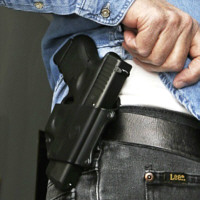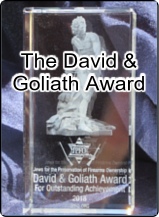

AZ: Department of Transportation
adds Armed Driver Guidelines
![]()

By Dean Weingarten. July 25th, 2017
Article Source
The Arizona Department of Transportation has added a section to its drivers manual suggesting the proper behavior for an armed driver, when stopped by police. The change was prompted by the tragic Philando Castile case.
From fox10phoenix.com, the manual change was requested by Democratic state Representative Reginald Bolding, from District 27. District 27 is a solidly Democrat stronghold in South Phoenix. Bolding was elected in 2014 and re-elected in 2016.
From azdot.gov , page 57 of the Drivers License Manuel :
•
Inform the officer of any weapons on
your person or in the vehicle.
In addition to the guidelines above, drivers
with firearms in the vehicle should keep
your hands on the steering wheel in a visible
location and when the officer approaches
let them know that you have a firearm in the
vehicle and where the firearm is located. If
requested, the officer may take possession
of the weapon, for safety reasons, until the
contact is complete.
Arizona law does not require that people carrying concealed weapons notify police, but it requires that people carrying a concealed deadly weapon answer truthfully if asked by police if they are carrying . If the officer does not ask, a person who is carrying a concealed weapon is not obligated to tell the officer they are armed.
From azleg.gov 13-3102:
A. A person commits misconduct involving weapons by knowingly:
1. Carrying a deadly weapon except a pocket knife concealed on his person or within his immediate control in or on a means of transportation:
(a) In the furtherance of a serious offense as defined in section 13-706, a violent crime as defined in section 13-901.03 or any other felony offense; or (b) When contacted by a law enforcement officer and failing to accurately answer the officer if the officer asks whether the person is carrying a concealed deadly weapon;
If the driver has a concealed carry permit, an alternative is to hand the officer the permit along with the driver's license. Then the officer will be responding to the positive information of "concealed carry permit holder", instead of "armed driver".
If you do not have a permit, use a positive phrase. Many officers have been trained to react negatively to the word "gun". Telling the officer that you are "legally armed" is better than saying "I have a gun".
The perception of concealed carry permit holders changed considerably in 1999 when permit holder Rory Vertigan captured a cop killer with his legally carried Glock pistol. Police called Vertigan a hero and donated money for him to buy a new Glock while his was impounded as evidence. More recently, an armed citizen is credited with saving Arizona State Trooper, Edward Anderson.
There are numerous stories of people with concealed carry permits seeing a positive change in police attitudes when the police were informed the person stopped had a permit.
The acknowledgment in the DOT drivers manual that many drivers are legally armed is a sign of the normalization of armed citizens.
The tragic circumstances of the Philando Castile case will be cited for and against the advisability of notifying officers if you are armed. In some states, the notification is required by law. In others, it is conditional, depending on whether the officer asks or not. In other states, no notification is necessary.
Minnestota law is similar to that of Arizona. Castile was not required to notify the officer that he was armed until asked. The shooting of Castile might have been avoided if he had not volunteered that he was armed, or if he had kept his hands on the dash while waiting for the officers instructions.
©2017 by Dean Weingarten: Permission to share is granted when this notice and link are included. Gun Watch
The issue of vehicular carry can be contentious - some claim it's no one's business whether they are armed or not - others see it more from the law enforcement angle whereby we realize the potential dangers faced by an officer during a traffic stop. The Arizona model could well be seen as a good compromise but most important in any state is the use of common sense such that a 'situation' is not allowed to develop with potentially dangerous consequences.
![]()

























